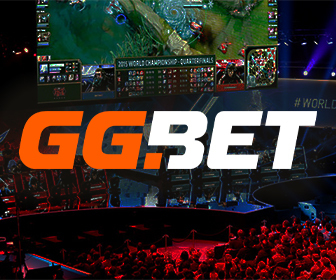Recovery from addiction is one of the hardest journeys a person can take. It demands persistence, resilience, and daily commitment.
Yet, like any long-term challenge, the process can sometimes feel overwhelming or monotonous. That’s where gamification—the use of game-like elements such as points, levels, and rewards—comes in.
By framing sobriety as a game with measurable progress and tangible rewards, people in recovery can stay engaged, motivated, and hopeful.
Gamification doesn’t trivialize recovery—it enhances it by turning milestones into meaningful wins.
1. Why Gamification Works in Recovery
Gamification taps into the brain’s reward system, the very system that addiction hijacks. Substances or behaviors provide immediate, artificial dopamine spikes, training the brain to crave instant gratification. Recovery, on the other hand, often requires patience and long-term commitment.
Gamification bridges the gap by:
- Providing instant reinforcement: Points, badges, or small rewards keep motivation alive.
- Making progress visible: Tracking milestones helps people see how far they’ve come.
- Encouraging consistency: Daily “quests” or streaks promote healthy habits.
- Replacing unhealthy rewards with healthy ones: Achievements trigger dopamine in positive, non-destructive ways.
In short, gamification gives the brain the reward it craves while supporting sustainable recovery.
2. Point Systems: Turning Daily Actions Into Wins
At the heart of gamification are point systems, which assign value to recovery actions. Examples include:
- 1 point for attending a support group meeting.
- 2 points for exercising or practicing mindfulness.
- 5 points for hitting a sobriety milestone (one week, one month, one year).
- Bonus points for helping others in recovery or mentoring peers.
These points serve as a motivational tool—proof that every small choice contributes to larger progress. Just as in a game, consistency adds up to big wins.
3. Rewards and Milestones
Gamification is most effective when points translate into rewards. These can be simple or elaborate, but they should feel meaningful to the individual. Examples include:
- Personal rewards: Treating oneself to a favorite meal, book, or activity after reaching a milestone.
- Symbolic rewards: Chips, coins, or badges often given in recovery communities.
- Social rewards: Sharing achievements with peers, family, or online communities for encouragement.
- Experience rewards: Planning a small trip, trying a new hobby, or investing in a personal growth opportunity.
By celebrating progress, rewards keep recovery from feeling like a never-ending uphill battle.
4. Levels, Quests, and Streaks
Gamification also borrows from role-playing and adventure games to create a sense of forward motion:
- Levels: Moving from “Novice” (first week sober) to “Master” (multi-year sobriety).
- Quests: Setting challenges like “attend three meetings this week” or “practice gratitude daily.”
- Streaks: Tracking consecutive sober days, with encouragement to keep the streak alive.
These elements help recovery feel less abstract and more like a structured, achievable game.
5. Community and Multiplayer Mode
Games are often more engaging with others—and so is recovery. Community-driven gamification brings accountability and camaraderie:
- Leaderboards: Friendly competition within support groups.
- Team quests: Group challenges like “30 days of meditation.”
- Shared milestones: Celebrating achievements together, reinforcing a sense of belonging.
This social element motivates individuals while reducing the isolation that often accompanies recovery.
6. Digital Tools for Gamified Recovery
Several apps and platforms already integrate gamification into sobriety support:
- Sobriety trackers: Apps that award badges and streaks for every sober day.
- Habit-building apps: Systems that give points for completing healthy routines.
- Community platforms: Online spaces where milestones can be shared and celebrated.
These digital tools give individuals 24/7 access to motivation and accountability.
7. Potential Pitfalls and Balance
While gamification is powerful, it’s important to recognize potential pitfalls:
- Over-focusing on points: Recovery isn’t about competition—it’s about healing.
- External vs. internal motivation: Rewards should encourage intrinsic growth, not just external validation.
- Shame over losing streaks: Systems should frame setbacks as opportunities to restart, not failures.
Gamification works best when paired with therapy, support groups, and other recovery methods—not as a replacement.
8. The Bigger Picture: Redefining Reward
Ultimately, gamifying sobriety isn’t about turning recovery into a game—it’s about retraining the brain’s relationship with reward. By replacing destructive highs with healthy, motivating systems, individuals learn that achievement, connection, and growth can provide just as much satisfaction as substances once did.
The real “win” is not just collecting points—it’s building a life of resilience, health, and joy.
Conclusion: Playing the Game of Recovery
Recovery is often seen as a long, daunting journey. Gamification reframes it as an exciting quest with daily victories, meaningful milestones, and ongoing growth. Through point systems, rewards, levels, and community, sobriety becomes not just about resisting addiction, but about actively playing—and winning—the most important game of all: building a fulfilling, healthy life.

